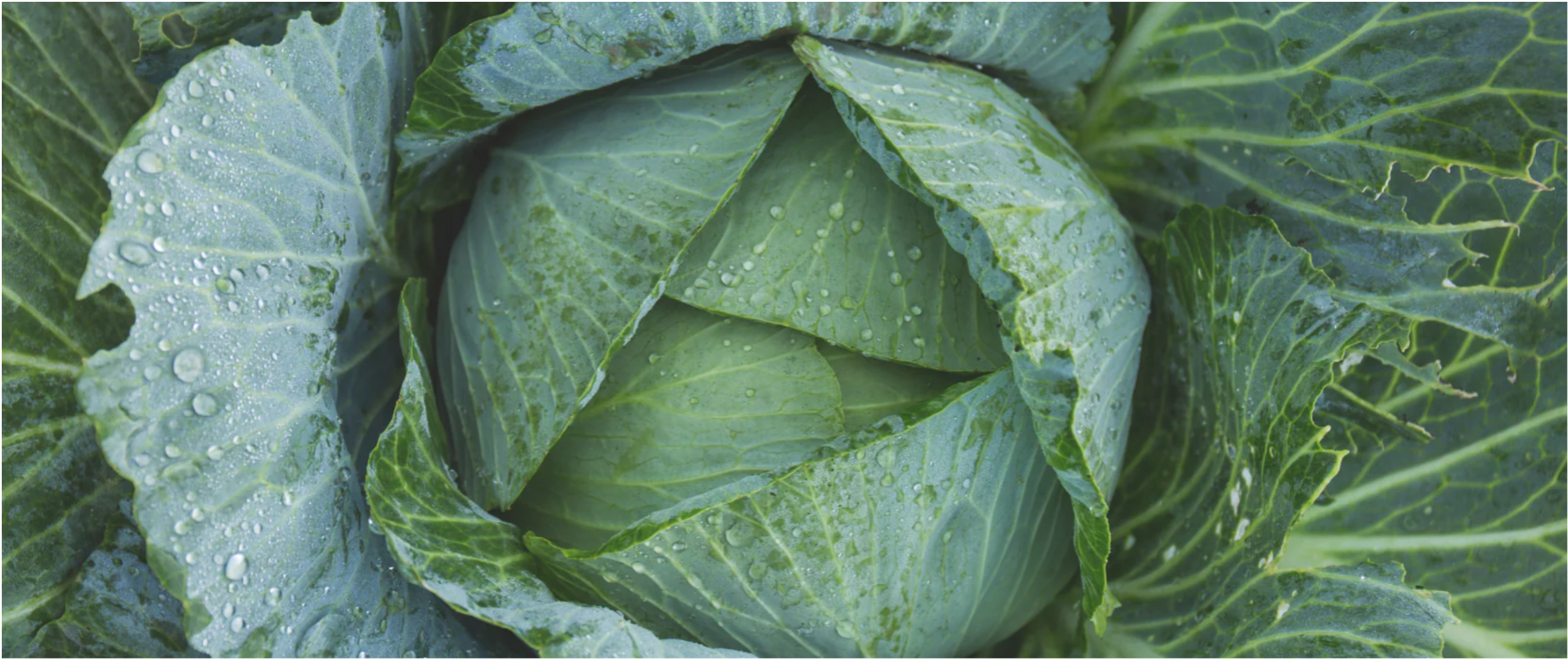
Cabbage Leaves + Breast Pain: The Evidence Explained
Let’s talk about cabbage leaves for breastfeeding.
Whether you’ve never heard of using cabbage leaves on swollen, tender breasts or you’re an avid veggie-wearer postpartum, you’ve likely wondered how this got started, does it really work, and how exactly does it work?
For years, all we had to rely on for breast engorgement was the old home remedy of crushed cabbage leaves, a wing, and a prayer. As a female OB-GYN, I felt women deserved a more convenient, more effective, and safer alternative.
Hence, CaboCréme was born.
Until recently, there has been minimal scientific evidence for why cabbage extract works for engorged breasts, clogged ducts, and pre-mastitis knots. Just a few years ago, the American Academy of Breastfeeding Medicine published an article linking clogged ducts to an inflammatory process rather than a blockage(1).
We believe we have found the missing link between cabbage leaves and breast inflammation in a little known protein called microRNA172A.
The Origin of Cabbage Leaves
The use of cabbage leaves as a holistic remedy for postpartum breast care dates back hundreds, perhaps thousands, of years. The first documented use of cabbage leaves for breast tenderness is difficult to pinpoint precisely, as it is a traditional essential that’s been passed down through oral tradition rather than formal medical texts.
It’s believed to date back to ancient European folk medicine, where cabbage was commonly used for various ailments, including inflammation and swelling based on the anecdotal evidence we’ve seen.
Some sources suggest that the use of cabbage leaves for breast engorgement became more widely recognized and documented in the early 20th century, as midwives and healthcare providers began to incorporate more natural breast engorgement remedies into postpartum care.
However, formal scientific documentation of cabbage leaves for breast tenderness did not emerge until much later, with clinical studies beginning in the mid-20th century. The studies were very small, rudimentary, and insignificant to the whole body of knowledge.
What we do know is that women historically turned to green cabbage leaves for their natural cooling and anti-inflammatory properties to soothe breast pain and swelling during weaning. Passed down through generations, this remedy became a trusted, natural approach to alleviating discomfort, long before the advent of modern medicine.
Given that so many women and healthcare practitioners are still waking up to the benefits, it highlights the enduring wisdom of plant-based solutions that have been a cornerstone of women’s health and self-care throughout history.
The Secrets in the Leaves
In the last decade of creating cabbage extract products that work well for women, it’s important to note that not all cabbage is created equally. Let’s take a look at what we know so far.
Cruciferous vegetables, particularly those in the Brassica genus (such as cabbage, broccoli, and Brussels sprouts), are known for their potent anti-inflammatory properties, making them particularly effective for swelling.
This is primarily due to several bioactive compounds they contain:
-
Glucosinolates: These sulfur-containing compounds are unique to these vegetables and are broken down into biologically active metabolites like sulforaphane and indole-3-carbinol. These metabolites have been shown to reduce inflammation by influencing various cellular pathways involved in the body's inflammatory response.
-
Vitamins and Antioxidants: Cruciferous vegetables are rich in vitamins C, E, and K, as well as beta-carotene. These nutrients act as antioxidants, neutralizing free radicals and reducing oxidative stress that can contribute to inflammation and swelling.
-
MicroRNAs (miRNAs): Recent research has identified microRNAs, such as miRNA172a, in cabbage and other plants. These small RNA molecules regulate gene expression and can inhibit the production of pro-inflammatory cytokines, thereby reducing swelling and inflammation at a cellular level. More on this below.
- Polyphenols and Flavonoids: These are plant compounds found in these vegetables that also contribute to their anti-inflammatory effects. They help modulate the immune response and can reduce the production of substances like prostaglandins, which are involved in swelling and pain.
The combination of these anti-inflammatory compounds and nutrients makes these kinds of vegetables, particularly Brassica oleracea (green cabbage), ideal for addressing inflammation and swelling, whether applied topically through the skin barrier (as with cabbage leaves) or ingested.
Their ability to reduce oxidative stress, regulate inflammation-related genes, and inhibit inflammatory proteins makes them particularly beneficial in managing conditions like engorgement, joint swelling, and other inflammatory disorders.
Connecting the Dots: Cabbage Extract and the Inflammatory Response
With so many documented benefits of the Brassica family and green cabbage specifically, it only makes sense that concentrated extracts could have an enormously positive impact on our health and feelings of wellness.
Up until a few years ago, the scientific research around cabbage leaves was sparse and often inconclusive. Previous studies, dating before 2017, lacked the large-scale participant numbers needed to really deliver reliable results.
However, in 2017, a more robust study compared cold crushed cabbage leaves (releasing the juice) to cold gel packs, with a control group receiving no treatment(2).
The study revealed that both the cabbage leaves and gel packs significantly reduced pain and breast hardness compared to the control group, offering our first glimpses into the scientific validation for what mothers had known anecdotally for centuries.
In a 2020 article published in ABM (Article #36), mastitis and clogged milk ducts were redefined as primarily inflammatory conditions rather than simply issues of blocked ducts. This shift in understanding highlighted the role of inflammation in causing pain and discomfort in breastfeeding mothers(1).
Even more exciting, another study published in the Frontiers of Pharmacology in March 2022 brought significant breakthroughs in understanding the cellular mechanisms behind cabbage extract's effectiveness.
The study, led by Koserella and Kohling in Warsaw, Poland, investigated green cabbage extract (Brassica oleracea) and its effect on inflammation. Using rat models of rheumatoid arthritis, they found that the cabbage extract significantly reduced inflammation at the molecular level(3).
Specifically, the extract worked through microRNA172a, a small RNA molecule abundant in cabbage that regulates the expression of inflammation-producing genes like FAN protein and TNF-ɑ.
MicroRNAs like miRNA172a are like molecular "Uber drivers" that deliver messages of genetic expression, including those responsible for producing FAN protein and TNF-ɑ, which are proteins that cause inflammation.
In essence, cabbage extract can potentially block the production of pro-inflammatory messengers, thereby reducing swelling and discomfort, which is crucial in conditions like breast engorgement and pre-mastitis states.
Why We Do What We Do
As new research emerges, we remain committed to advancing our understanding of how natural compounds like Brassica oleracea cabbage extract can provide relief and support for mothers, women, and the world at large.
Plants are not alternative medicine after all, they are the original. And we’re here for the Cabolution!
Sadly, cabbage leaves themselves carry Listeria and Salmonella and can cause fatal infections in a newborn. Cabbage leaves are also inconsistent in their potency of miRNAs due to the age of the cabbage. Needless to say, it’s inconvenient and smelly to wear cabbage in your bra. We set out to come up with a better solution that would benefit modern women.
CaboCréme was founded on fusing both ancient wisdom and scientific research to create a more convenient, concentrated, effective, and safer alternative to cabbage leaves.
As the original Cabbage Queens, we design products to ease inflammation, empowering women to live without limits.
From our breast tenderness creams to our incredibly luxurious and effective postpartum bath salts, it’s our mission to stay on the leading edge of this research and continually bring the highest quality of cabbage extract benefits to those who need it, especially women and mothers.
The future of research into cabbage’s effects on lactation and inflammation is promising, and we look forward to further evidence-based studies that could revolutionize the postpartum and life experience for even more women.
We’re women helping women and love to see women thriving, not just surviving.
Resources
- Mitchell, Katrina B. “ABM Clinical Protocol #36.” Bfmed.Org, www.bfmed.org/assets/ABM Clinical Protocol 35.pdf.
- Wong BB;Chan YH;Leow MQH;Lu Y;Chong YS;Koh SSL;He HG; “Application of Cabbage Leaves Compared to Gel Packs for Mothers with Breast Engorgement: Randomised Controlled Trial.” International Journal of Nursing Studies, U.S. National Library of Medicine, pubmed.ncbi.nlm.nih.gov/28941842/. Accessed 11 Sept. 2024.
- Kasarello, Kaja, et al. “The Anti-Inflammatory Effect of Cabbage Leaves Explained by the Influence of Bol-miRNA172a on Fan Expression.” Frontiers, Frontiers, 8 Mar. 2022, www.frontiersin.org/journals/pharmacology/articles/10.3389/fphar.2022.846830/full.




